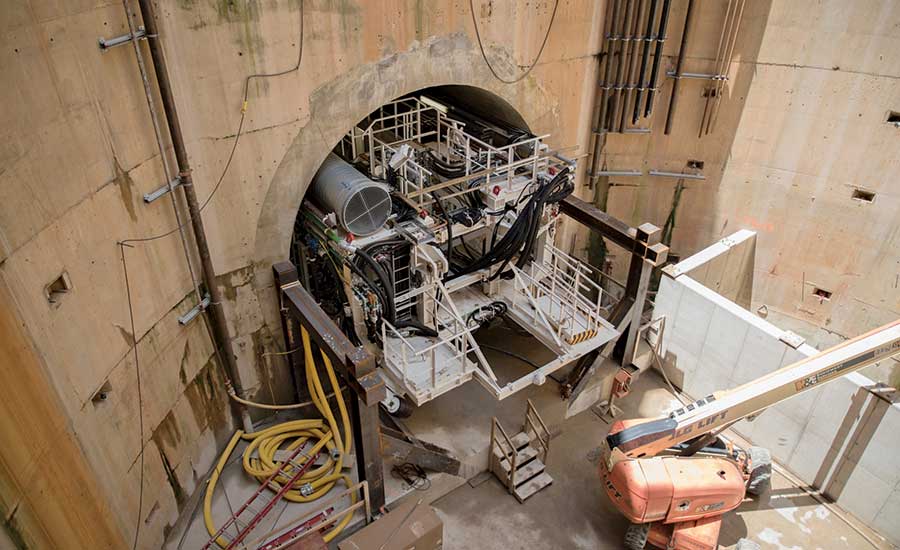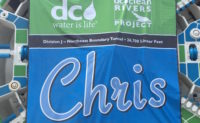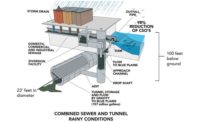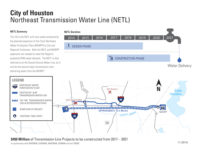Construction of the largest and final segment of the Anacostia River Tunnel System is set to begin this month. Part of DC Water’s larger $2.7-billion Clean Rivers Project to help the District of Columbia comply with the Clean Water Act, the project includes a 13.1-mile-long tunnel system—to be completed in 2023—that will capture 98% of sewage overflows to the Anacostia River.
The final $580-million, five-mile section known as the Northeast Boundary Tunnel is the most expensive of the four Anacostia tunnel segments. A joint venture of Salini Impregilo and S.A. Healy was selected for the design-build project, which includes a 23-ft-dia reinforced-concrete tunnel to be burrowed up to 160 ft below ground. The effort will help relieve chronic sewer flooding in several areas of northeast D.C. by diverting combined sewer overflow to the tunnel.
A tunnel-boring machine procured for the project was named after the late Christopher Allen, DC Water’s former assistant director for the Clean Rivers Project. Allen, who died late last year, managed all of the Clean Rivers construction projects, including the Blue Plains Tunnel, which was ENR’s Project of the Year for 2016.
Experienced in construction management, general contracting, consulting field supervision and program management, Allen managed projects at major international airports and the Pentagon, as well as other large capital improvement efforts before he joined DC Water in 2011.
David Gadis, DC Water’s chief executive and general manager, said in a statement that Allen was “a man whose influence will long live on in the projects to which he has contributed his talents, and to the people to whom he has given great inspiration.”
On March 20, DC Water opened the first Anacostia River tunnel segment, which had been under construction since 2013. The segment has prevented approximately 92% of combined sewer overflows in that area from entering the Anacostia since it began operating.
The district is also working toward reducing sewage overflows on the Potomac River, including in Rock Creek. A tunnel and green infrastructure to reduce overflows along the Potomac River are in the design phase.
But DC Water will only build a tunnel to improve drainage around Rock Creek if other means to reduce sewage overflow aren’t effective, says DC Water spokeswoman Pamela Mooring. For example, DC Water, in conjunction with the District Dept. of Transportation, completed a $2-million streetscape project last month that includes green infrastructure to help manage stormwater runoff to reduce combined sewer overflows into Rock Creek. The project includes rain gardens, permeable parking lanes, drywells and landscape infiltration gaps.








